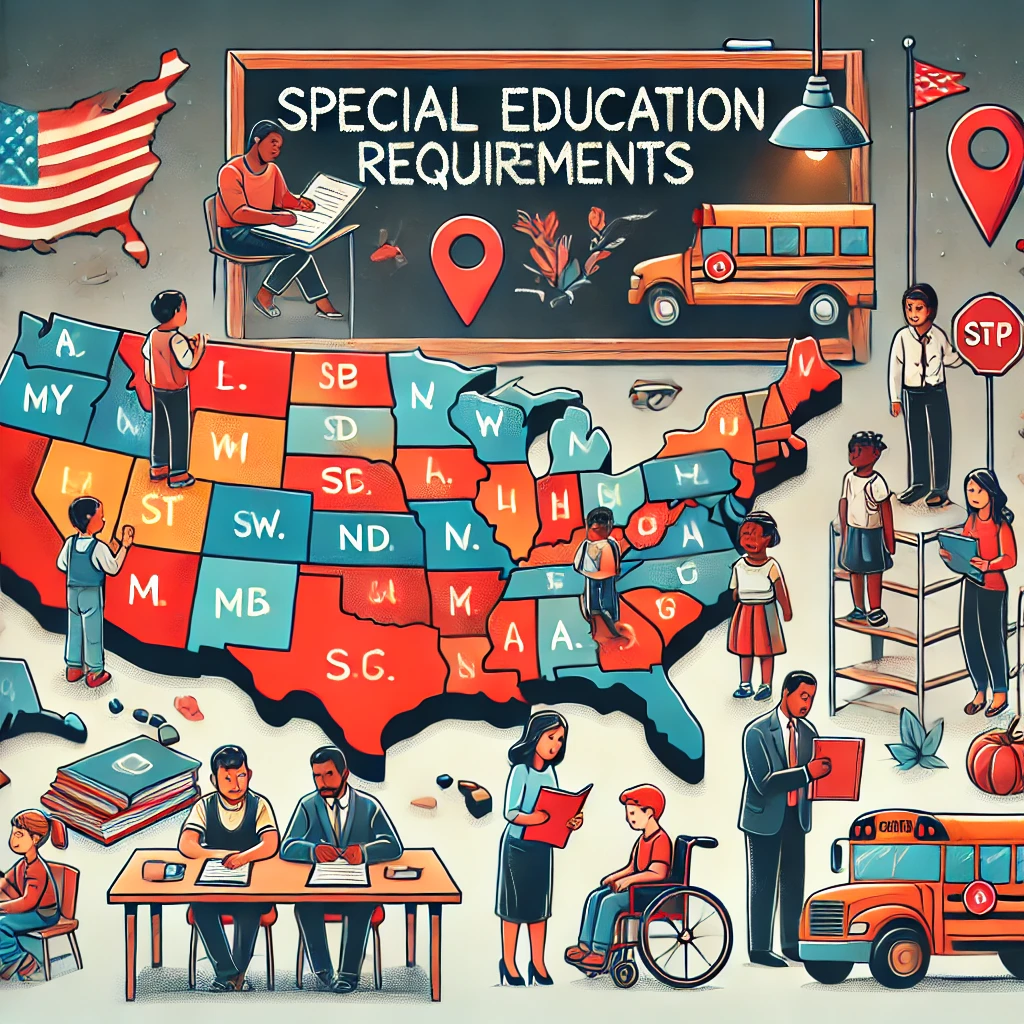More States Struggling with Special Education Requirements
In recent years, an increasing number of states have been struggling to meet special education requirements. The challenges of providing adequate resources and support for students with special needs have intensified, highlighting the urgent need for systemic improvements. This article delves into the issues facing special education, examines the reasons behind these struggles, and explores potential solutions to ensure that all students receive the support they need.
The Growing Challenges in Special Education
Increasing Demand for Special Education Services
Special education services have seen a significant rise in demand. With more students being diagnosed with disabilities, schools are grappling with the increased need for specialized instruction, individualized education plans (IEPs), and additional support staff. This surge has placed immense pressure on educational institutions, leading to widespread struggles in meeting special education requirements.
Funding Shortfalls
One of the most critical challenges in special education is the lack of adequate funding. Many states allocate insufficient resources to special education programs, making it difficult for schools to hire qualified teachers, provide necessary training, and acquire essential learning materials. This financial strain exacerbates the difficulties in delivering high-quality special education services.
Shortage of Qualified Special Education Teachers
There is a growing shortage of qualified special education teachers across the country. The demands of the profession, coupled with inadequate compensation and support, deter many from entering or remaining in the field. This shortage directly impacts the quality of education that students with disabilities receive, as schools struggle to maintain low student-to-teacher ratios and provide individualized attention.
Compliance with Federal Regulations
Meeting federal regulations, such as the Individuals with Disabilities Education Act (IDEA), is a significant challenge for many states. Compliance requires extensive documentation, regular assessments, and continuous updates to IEPs. Schools often lack the administrative support necessary to manage these requirements effectively, leading to lapses in compliance and the risk of legal repercussions.
Addressing the Struggles in Special Education
Increasing Funding and Resources
Addressing the funding shortfalls in special education is crucial. States must allocate more resources to special education programs, ensuring that schools have the financial means to hire qualified staff, provide ongoing training, and purchase necessary materials. Additionally, federal grants and funding initiatives can help bridge the gap and support states in meeting special education requirements.
Expanding Teacher Training Programs
To combat the shortage of special education teachers, states should invest in comprehensive teacher training programs. Offering incentives such as scholarships, loan forgiveness, and competitive salaries can attract more individuals to the profession. Moreover, providing ongoing professional development opportunities can help retain existing teachers and enhance their skills in special education.
Leveraging Technology
Technology can play a significant role in addressing the challenges of special education. Assistive technologies, such as speech-to-text software, communication devices, and adaptive learning platforms, can support students with disabilities in their learning journey. Schools should invest in these technologies and provide training for teachers to integrate them effectively into the classroom.
Enhancing Collaboration and Support
Collaboration between general education and special education teachers is vital for providing comprehensive support to students with disabilities. Schools should foster a culture of collaboration, encouraging regular communication and teamwork among educators. Additionally, involving parents and caregivers in the educational process can ensure that students receive consistent support both at school and home.
Case Studies: States Making Progress
New Jersey: A Model for Special Education
New Jersey has been recognized for its robust special education programs. The state allocates significant funding to special education, ensuring that schools have the resources needed to support students with disabilities. Additionally, New Jersey offers extensive training programs for special education teachers, focusing on evidence-based practices and inclusive teaching strategies.
Massachusetts: Embracing Inclusive Education
Massachusetts has made strides in promoting inclusive education. The state emphasizes the integration of students with disabilities into general education classrooms, providing support through co-teaching models and individualized instruction. Massachusetts also invests in assistive technologies, ensuring that students have access to the tools they need to succeed.
Moving Forward: A Call to Action
Advocacy and Awareness
Raising awareness about the challenges in special education is essential. Advocacy groups, educators, and parents must work together to highlight the importance of adequate funding, qualified teachers, and inclusive practices. By fostering a collective understanding of these issues, stakeholders can advocate for policy changes and increased support for special education programs.
Policy Reforms
State and federal policymakers must prioritize special education in their agendas. Implementing policy reforms that address funding disparities, teacher shortages, and compliance challenges can pave the way for meaningful improvements in special education. Collaborative efforts between policymakers, educators, and advocacy groups can drive these reforms forward.
Community Engagement
Engaging the community in special education initiatives can create a supportive environment for students with disabilities. Schools should collaborate with local organizations, businesses, and volunteers to provide additional resources and support. Community involvement can enhance the educational experience for students with disabilities and foster a culture of inclusion and acceptance.
Conclusion
The struggle to meet special education requirements is a growing concern for many states. By addressing funding shortfalls, expanding teacher training programs, leveraging technology, and enhancing collaboration, states can improve the quality of special education services. Case studies from states like New Jersey and Massachusetts demonstrate that progress is possible with the right strategies and resources. It is imperative that stakeholders continue to advocate for policy reforms and increased support to ensure that all students receive the education they deserve.
For more information on improving special education services, visit Regent Studies.




